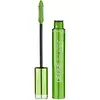What's inside
What's inside
 Key Ingredients
Key Ingredients

 Benefits
Benefits

 Concerns
Concerns

 Ingredients Side-by-side
Ingredients Side-by-side

Water
Skin ConditioningParaffin
PerfumingBeeswax
Emulsion StabilisingAcacia Senegal Gum
MaskingStearic Acid
CleansingCopernicia Cerifera Wax
Palmitic Acid
EmollientTriethanolamine
BufferingTalc
AbrasivePtfe
Hydroxyethylcellulose
Emulsion StabilisingPEG-40 Stearate
EmulsifyingAminomethyl Propanediol
BufferingPanthenol
Skin ConditioningMethylparaben
PreservativeRayon
Sodium Polymethacrylate
Emulsion StabilisingPropylparaben
PreservativeSynthetic Beeswax
Emulsion StabilisingPhenyl Trimethicone
Skin ConditioningSimethicone
EmollientHydroxypropyl Chitosan
BHT
Antioxidant2-Oleamido-1,3-Octadecanediol
Skin ConditioningPolyquaternium-10
Acrylates/Vp Copolymer
CI 77491
Cosmetic ColorantCI 77499
Cosmetic ColorantCI 77492
Cosmetic ColorantCI 77891
Cosmetic ColorantMica
Cosmetic ColorantCI 75470
Cosmetic ColorantCI 77288
Cosmetic ColorantCI 77289
Cosmetic ColorantCI 77742
Cosmetic ColorantCI 77510
Cosmetic ColorantWater, Paraffin, Beeswax, Acacia Senegal Gum, Stearic Acid, Copernicia Cerifera Wax, Palmitic Acid, Triethanolamine, Talc, Ptfe, Hydroxyethylcellulose, PEG-40 Stearate, Aminomethyl Propanediol, Panthenol, Methylparaben, Rayon, Sodium Polymethacrylate, Propylparaben, Synthetic Beeswax, Phenyl Trimethicone, Simethicone, Hydroxypropyl Chitosan, BHT, 2-Oleamido-1,3-Octadecanediol, Polyquaternium-10, Acrylates/Vp Copolymer, CI 77491, CI 77499, CI 77492, CI 77891, Mica, CI 75470, CI 77288, CI 77289, CI 77742, CI 77510
Water
Skin ConditioningParaffin
PerfumingPotassium Cetyl Phosphate
EmulsifyingCera Alba
EmollientCopernicia Cerifera Cera
EmollientAcacia Senegal Gum
MaskingCetyl Alcohol
EmollientGlycerin
HumectantHydroxyethylcellulose
Emulsion StabilisingPhenoxyethanol
PreservativePEG/PPG-17/18 Dimethicone
EmulsifyingSteareth-20
CleansingSilica
AbrasivePhenethyl Alcohol
MaskingSodium Polymethacrylate
Emulsion StabilisingHydrogenated Jojoba Oil
AbrasiveHydrogenated Palm Oil
EmollientPolyquaternium-10
Disodium EDTA
Tin Oxide
AbrasivePanthenol
Skin ConditioningBHT
AntioxidantUltramarines
Water, Paraffin, Potassium Cetyl Phosphate, Cera Alba, Copernicia Cerifera Cera, Acacia Senegal Gum, Cetyl Alcohol, Glycerin, Hydroxyethylcellulose, Phenoxyethanol, PEG/PPG-17/18 Dimethicone, Steareth-20, Silica, Phenethyl Alcohol, Sodium Polymethacrylate, Hydrogenated Jojoba Oil, Hydrogenated Palm Oil, Polyquaternium-10, Disodium EDTA, Tin Oxide, Panthenol, BHT, Ultramarines
 Reviews
Reviews

Ingredients Explained
These ingredients are found in both products.
Ingredients higher up in an ingredient list are typically present in a larger amount.
Acacia Senegal Gum has skin soothing, thickening, and formulation stabilizing properties. It comes from the Acacia tree that is native to sub-Saharan Africa.
BHT is a synthetic antioxidant and preservative.
As an antioxidant, it helps your body fight off free-radicals. Free-radicals are molecules that may damage your skin cells.
As a preservative, it is used to stabilize products and prevent them from degrading. Specifically, BHT prevents degradation from oxidation.
The concerns related to BHT come from oral studies; this ingredient is currently allowed for use by both the FDA and EU.
However, it was recently restricted for use in the UK as of April 2024.
Learn more about BHTHydroxyethylcellulose is used to improve the texture of products. It is created from a chemical reaction involving ethylene oxide and alkali-cellulose. Cellulose is a sugar found in plant cell walls and help give plants structure.
This ingredient helps stabilize products by preventing ingredients from separating. It can also help thicken the texture of a product.
This ingredient can also be found in pill medicines to help our bodies digest other ingredients.
Learn more about HydroxyethylcellulosePanthenol is a common ingredient that helps hydrate and soothe the skin. It is found naturally in our skin and hair.
There are two forms of panthenol: D and L.
D-panthenol is also known as dexpanthenol. Most cosmetics use dexpanthenol or a mixture of D and L-panthenol.
Panthenol is famous due to its ability to go deeper into the skin's layers. Using this ingredient has numerous pros (and no cons):
Like hyaluronic acid, panthenol is a humectant. Humectants are able to bind and hold large amounts of water to keep skin hydrated.
This ingredient works well for wound healing. It works by increasing tissue in the wound and helps close open wounds.
Once oxidized, panthenol converts to pantothenic acid. Panthothenic acid is found in all living cells.
This ingredient is also referred to as pro-vitamin B5.
Learn more about PanthenolParaffin is a solid created from petroleum. The term 'paraffin' can also refer to either
petroleum jelly or mineral oil.
It has natural occlusive properties which can worsen oily skin. Due to its petrolatum base, this ingredient is not fungal-acne safe.
Polyquaternium-10 is an ammonium salt of hydroxyethylcellulose. It is a white and granular powder used as a film-former and anti-static agent.
This ingredient is commonly found in hair conditioning products. According to a manufacturer, its positive charge makes it great for absorbing hair proteins. The manufacturer also states this ingredient helps with curl retention.
For haircare friends: this ingredient is not a silicone.
Learn more about Polyquaternium-10We don't have a description for Sodium Polymethacrylate yet.
Water. It's the most common cosmetic ingredient of all. You'll usually see it at the top of ingredient lists, meaning that it makes up the largest part of the product.
So why is it so popular? Water most often acts as a solvent - this means that it helps dissolve other ingredients into the formulation.
You'll also recognize water as that liquid we all need to stay alive. If you see this, drink a glass of water. Stay hydrated!
Learn more about Water